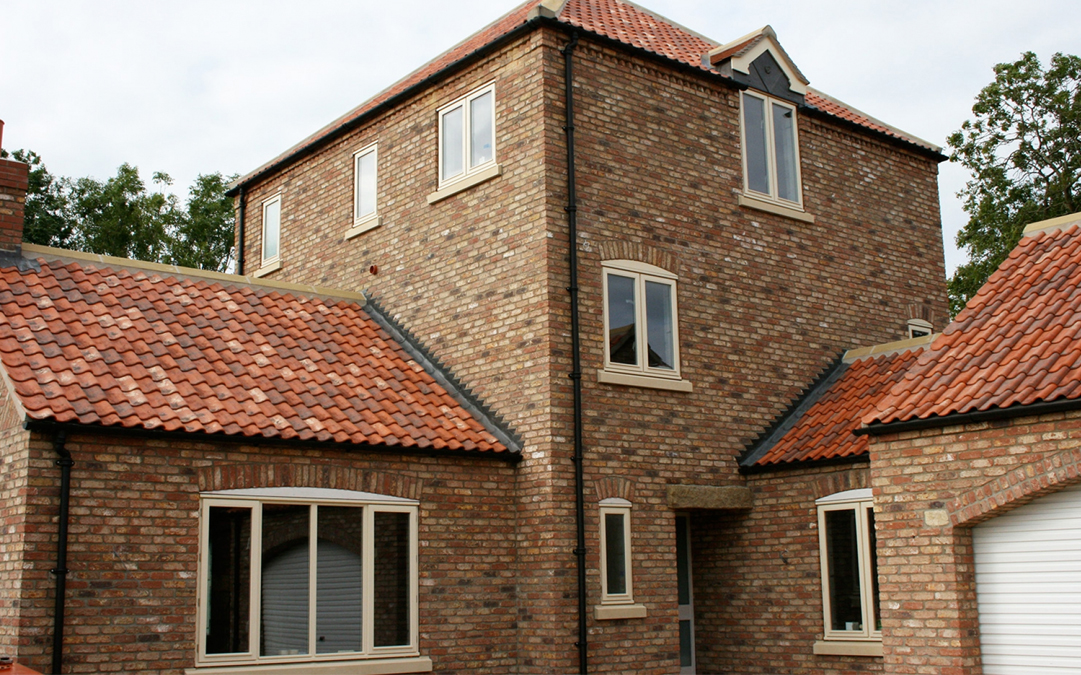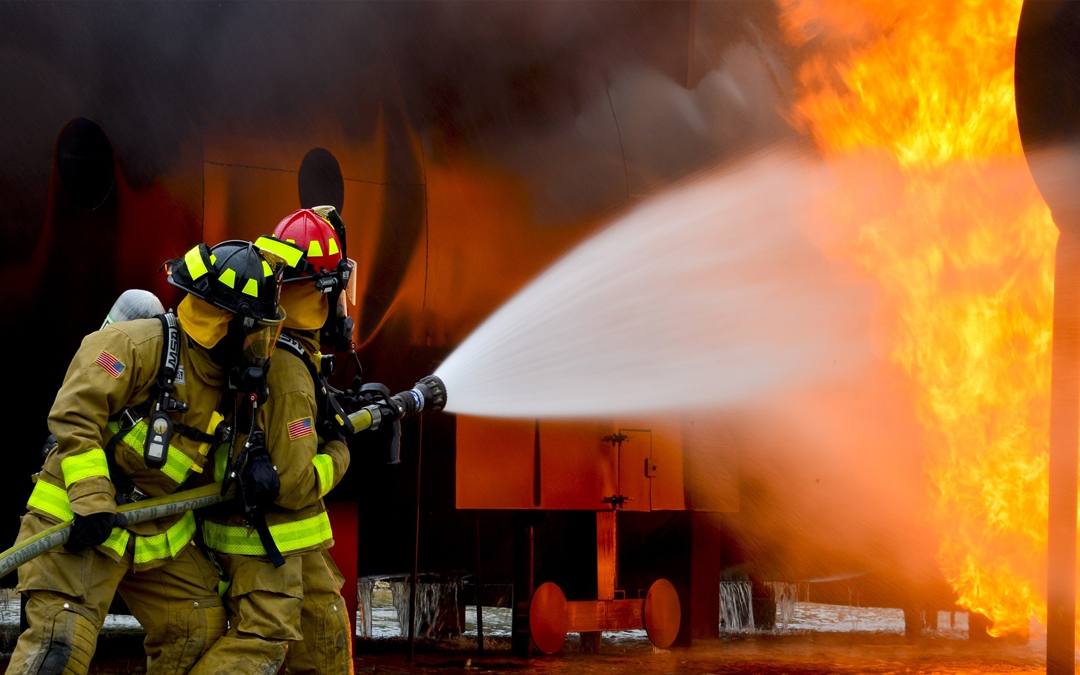In the event of a fire in a rented property, devastating damage can be caused, leaving your premises uninhabitable and putting the lives of those living at the property at risk. This is why it is incredibly important for landlords to have fire safety measures in place. The risks of experiencing a fire are seven times higher for people who live in rented or shared accommodation, according to Firemark. This is why there are several legal obligations landlords must abide by to ensure a rental property is safe.
This guide to fire safety regulations for landlords will explore the key pieces of legislation, types of fire safety measures, and fire safety for furnished properties.
- Understanding Fire Safety Legislation
- Landlord's Responsibilities
- Regular risk assessments
- Installation and maintenance of fire safety measures (fire doors, extinguishers, alarms)
- Ensuring clear escape routes
- Fire safety information and instructions for tenants
- Advice to prevent electrical fires
- Provide advice to prevent electrical fires
- Ask tenants not to leave candles and open flames unattended
- Remind tenants to take care when using the kitchen
- Advise tenants to minimise the use of flammable substances
- Make sure tenants know how to be prepared in the event of a fire
- Remind tenants to keep escape routes and exits free of obstructions
- Fire Safety Measures in Detail
- Fire Safety for Different Types of Properties
- Fire Safety for Furnished Properties
- Dealing with Vulnerable Tenants
- Creating a Fire Safety Plan
- Enforcement and Penalties
- Conclusion
- Resources
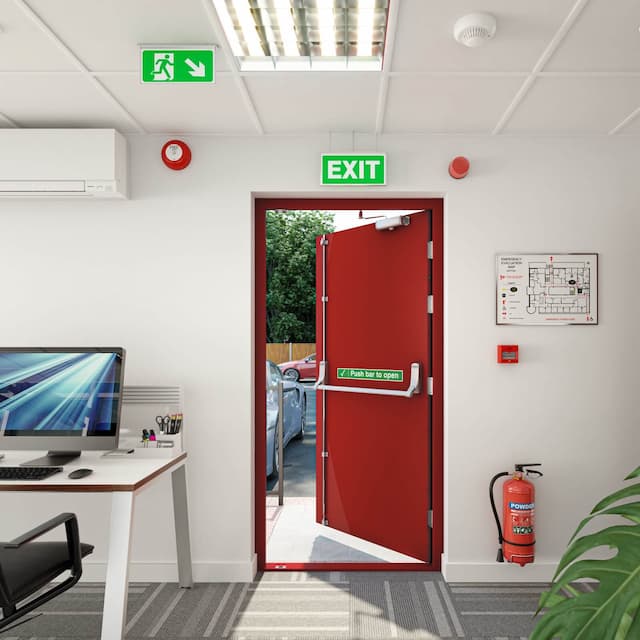
Understanding Fire Safety Legislation
If you rent out a property or are responsible for managing rented properties on a landlord’s behalf, these are the key pieces of fire safety legislation that you will need to meet:
- Provide a smoke alarm on each storey of the home
- Install a carbon monoxide alarm in any room with a solid fuel burning appliance (for example, a coal fire or wood burning stove)
- Escape routes for tenants at all times
- Furniture and furnishings supplied by the landlord must be fire-safe
- Provide fire alarms and extinguishers if the property is a large house with multiple occupations
Regulatory Reform (Fire Safety) Order 2005
Landlords need to be aware of the Regulatory Remore (Fire Safety) Order 2005, which provides a framework for regulating fire safety in multi-occupancy homes in England and Wales. Following the Grenfell Tower tragedy in 2017, Dame Judith Hackitt published a report “Building a Safer Future: Independent Review of Building Regulations and Fire Safety” in which the application of the Fire Safety Order, particularly concerning the parts used in common in high-rise multi-occupied residential buildings, was considered.
Understanding the Housing Act
The Housing Act 1988 covered a wide range of areas and decrees for most of the rights and responsibilities of tenants and landlords. In 2004, the Housing Act was updated to primarily focus on the risk to residents from fire in individual dwellings and their associated escape routes, together with a reduction of the risk in the building as a whole. The Fire Safety Order is primarily concerned with the safety of the building in the event of a fire.
Landlord’s Responsibilities
Landlords have several responsibilities to ensure that rented accommodation meets fire safety standards.
Regular risk assessments
Risk assessments will identify possible causes of fires, and highlight potential hazards and the precautions to reduce the likelihood of a fire. This is why periodical fire risk assessments are a legal requirement for many rental properties.
The law simply says that the person responsible for the assessment in your building must review it ‘regularly’ to make sure it’s up to date. A risk assessment should ideally be reviewed every two years and updated every four years. For older buildings or homes that are over three storeys, the risk assessment should be reviewed annually and updated every three years. There is no mandatory method of devising a fire risk assessment. It should at least include knowing what to do to reduce or prevent the risk of fire, ensuring working smoke alarms are present, and putting together an escape plan in case a fire does break out.
Installation and maintenance of fire safety measures (fire doors, extinguishers, alarms)
It is the landlord’s responsibility to install and maintain fire safety measures. These include fire doors, extinguishers, smoke alarms, carbon monoxide alarms, emergency lighting, and fire safety signs.
Once installed, these measures need to be periodically assessed and any faulty items must be replaced. Landlords should also ask tenants to contact them immediately if they are worried about fire safety at the property.
Ensuring clear escape routes
Landlords are legally responsible for making sure tenants have access to a safe and reliable escape route at all times. These can be external or internal. Escape routes need to have emergency lighting in place to ensure they can be used in the event of a fire. Escape routes should also be accessible from every floor and every room in the property to avoid the risk of tenants getting trapped.
Tenants should be made aware of what to do in an emergency to ensure they can exit the property as quickly as possible. Properties with multiple-occupation have stricter rules in place, as they are often larger and harder to exit. Complex rental properties should be assessed by a person who has comprehensive training or experience in fire risk assessment.
Fire safety information and instructions for tenants
Advice to prevent electrical fires
This includes switching off and unplugging appliances when not in use, and not overloading extension leads and plug sockets.
Provide advice to prevent electrical fires
Switch off and unplug appliances when not in use, and don’t overload extension leads and plug sockets.
Ask tenants not to leave candles and open flames unattended
Candles must be blown out when leaving the room.
Remind tenants to take care when using the kitchen
Remove pans from the heat if leaving the kitchen and clean the oven, hob, and grill frequently as grease can ignite a fire.
Advise tenants to minimise the use of flammable substances
Never leave any flammable substances near a heat source.
Make sure tenants know how to be prepared in the event of a fire
Outline a safe place to keep keys so everyone can find them in case of an emergency, escape routes are clearly outlined, and agree on a second exit in case a fire blocks the first one.
Remind tenants to keep escape routes and exits free of obstructions
Do not prop open fire doors.
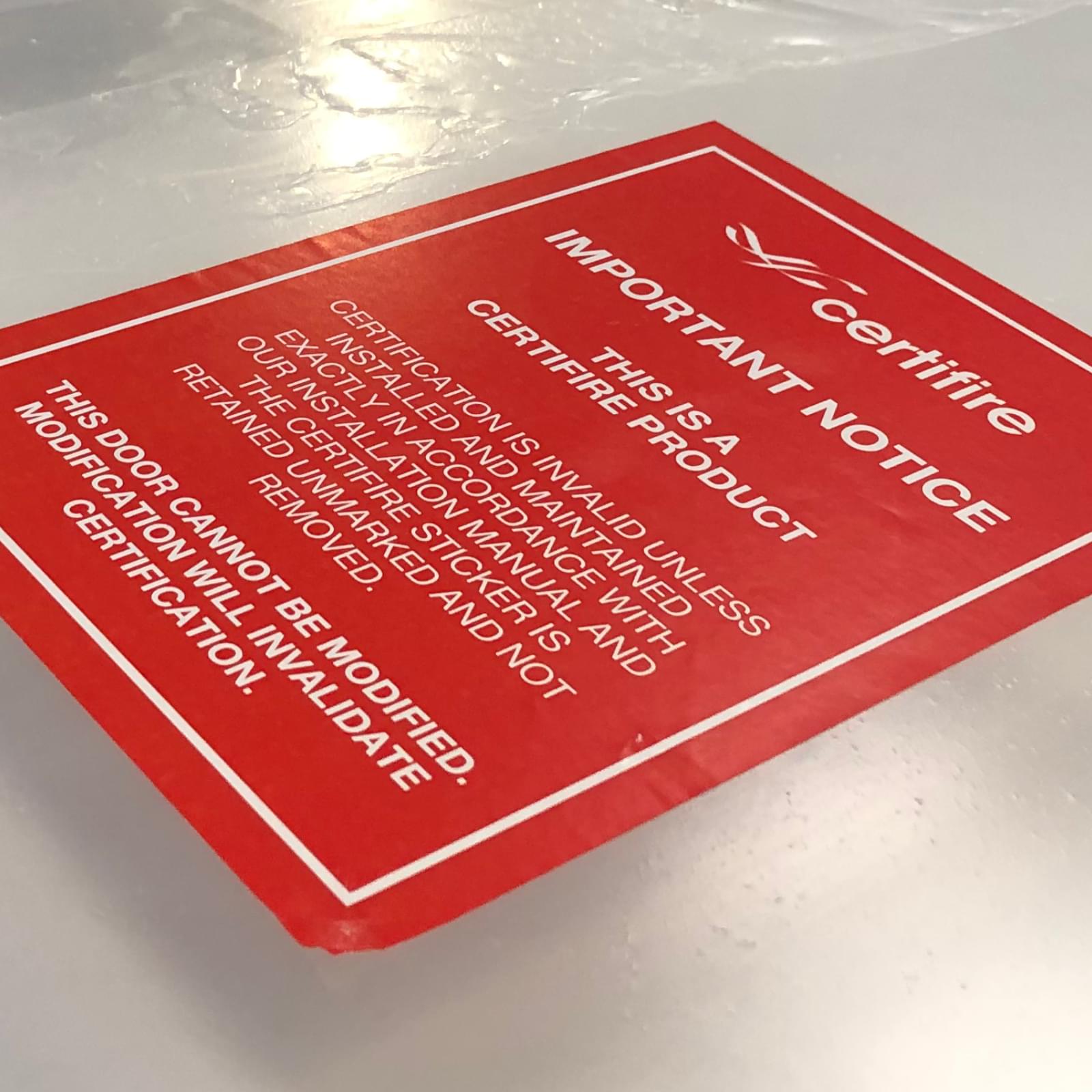
Fire Safety Measures in Detail
Landlords need to provide evidence to show they have done everything within their power to protect the property and tenants from fire and smoke damage. This will include inputting safety precautions, such as fitting the correct alarms and making sure the furniture you provide is safe.
Smoke alarms: types, installation, and maintenance
If you do not have a working smoke alarm in your home, you are eight times more likely to die in a fire. Landlords are required by law to have at least one working smoke alarm installed on every floor of a rental property. The Smoke and Carbon Monoxide Alarm (Amendment) Regulations 2022 came into force on 1 October 2022.
Types of Smoke Alarms
Ionisation alarms are the most affordable type of alarm available on the market. They work by using a small radioactive source to generate a current within the alarm. If smoke enters, it causes the current to change. Once too much smoke has been detected, the alarm will sound. Optical alarms use infrared beams to detect smoke. They are more expensive than ionisation alarms. Heat alarms do not detect smoke but instead alert you to an unexpected rise in temperature. They do this by using a thermistor to measure the air temperature. Once it reaches a set limit (around 58°C), the alarm will sound.
Installation
Tenants must ensure they are doing all they can to mitigate fire risks throughout the property. Landlords need to provide safety information and instructions for tenants in the event of a fire:
Smoke alarms should be installed at least 10 feet (3 metres) from a cooking appliance to minimise false alarms when cooking. Wall-mounted alarms should be installed no more than 12 inches away from the ceiling (to the top of the alarm). Smoke alarms can also be mounted on ceilings.
Maintenance
Most smoke alarms are fitted with a battery, which must be replaced once a year. Alarms must be tested at least once every six months. You simply press the ‘test’ button to ensure that it is still in good working order. Mains alarms are connected to your house’s electricity supply, so you don’t need to keep replacing the battery. They also have an inbuilt battery to ensure that they will still function in the event of a power cut. Landlords must check alarms are in working order at the start of each new tenancy and should encourage tenants to continue to check alarms every month.
Carbon monoxide detectors: where required, installation and maintenance
A carbon monoxide detector or CO detector is a device that detects the presence of carbon monoxide (CO) gas to prevent carbon monoxide poisoning.
Where they are required
A carbon monoxide alarm is required to be equipped in any room used as living accommodation that contains a fixed combustion appliance (excluding gas cookers).
Installation
The alarm should be at a horizontal distance of between 1 metre and 3 metres from the potential source. If there is a partition in a room, the alarm should be located on the same side of the partition as the potential source. Carbon monoxide alarms in rooms with sloped ceilings should be located on the high side of the room. It should also be located close to the ceiling and located at a height greater than the height of any door or window. It should be at least 150 mm from the ceiling. If the alarm is located on the ceiling it should be at least 300 mm from any wall and any ceiling obstruction e.g. light fittings.
Maintenance
Landlords must also make sure alarms are in working order at the start of each new tenancy and should encourage tenants to continue to check alarms every month. It’s also a good idea to inspect carbon monoxide alarms when carrying out routine property inspections.
Fire doors: requirements and standards
A fire door acts as a crucial safety device in a property. Delaying the spread of both fire and smoke, a fire door can help to give your tenants additional critical time to get to safety in the event of a fire. Fire doors can also help to minimise damage to the property by acting as a fire barrier, containing the fire and smoke for an extended period.
Requirements and standards
Under the Regulatory Reform (Fire Safety) Order 2005 (FSO), landlords are responsible for ensuring the safety of their tenants and properties are fire-safe. Both the door and the door frame should be fire resistant for at least 30 minutes, shown by an ‘FD30’ code, which makes for a safe evacuation time in an emergency. There should be an intumescent strip that expands to seal the gap between the door and the frame when exposed to heat. A self-closing mechanism should also be fitted to all fire doors. Fire doors should always be fitted by a competent installer and inspected periodically as part of a risk assessment.
Fire extinguishers and fire blankets: types, placement, and maintenance
A fire extinguisher is a handheld active fire protection device usually filled with a dry or wet chemical used to extinguish or control small fires. A fire blanket is a sheet of woven fire-resistant material designed to extinguish small fires.
Fire extinguishers are only obligatory in homes of multiple occupations (HMOs). It is a good idea to go beyond the minimum requirements where possible, so landlords may wish to provide one regardless of the property type. In HMOs, one fire extinguisher should be provided per floor and one fire blanket should be provided for each kitchen.
Types
There are five main types of fire extinguishers including wet chemical, CO2, dry powder, foam and water. To meet the current regulations it is important for you to have the exact type of fire extinguisher that is needed for a premises. Fire blankets are usually made from woven fibreglass and work by smothering smaller fires and cutting off the oxygen supply.
Placement
Fire blankets should be stored in a wall-mounted case or pouch for quick access in a fire emergency. Extinguishers should only be used on the type of fire they are designed for.
Foam extinguishers should be placed by the exits on floors that have been identified as class A (Ordinary solid combustibles such as paper, wood, cloth and some plastics) or class B (Flammable liquids such as alcohol, ether, oil, gasoline, and grease) fire risk. Water extinguishers must be placed by the exit on floors that have been identified as class A fire risk. CO2 extinguishers need to be placed near the source of the fire risk or close to the fire exits such as offices, kitchens, server rooms, and premises with electrical appliances and equipment.
Maintenance
Like alarms, extinguishers should be checked at the start of each tenancy and rechecked periodically during inspections. It’s important to advise tenants on how and when to use fire extinguishers and blankets.
Emergency lighting: requirements and maintenance
Emergency lighting is lighting for an emergency when the main power supply is cut and normal electrical illumination fails. The loss of mains electricity could be the result of a fire or a power cut. Without emergency lighting, this could lead to sudden darkness and possible danger to occupants, either through physical danger or panic.
Requirements
For HMOs, if there are only two storeys, conventional lighting is only necessary. With HMOs up to three or four storeys, conventional and emergency lighting is again needed, especially if the route is difficult to navigate and there is no natural light. HMOs with five or six stories require emergency escape lighting as well as conventional lighting. It is important to take into consideration these emergency lighting regulations when the HMOs have shared cooking facilities too.
Maintenance
To ensure that the system remains fully operational, essential servicing should be carried out periodically.
Maintenance
In everyday situations, fire signs make occupants in rented properties aware of health and safety risks or hazards on the premises. In times of emergencies, these signs are valuable guides for instructing people on what to do and where to go.
Types
Fire safety signs are always red with white symbols or text. The colour red is used to signify danger and indicates the location of fire equipment in an emergency. These fire health and safety signs are displayed to ensure that people within the building are aware of the location of fire equipment such as fire alarms, fire extinguishers, fire hoses, and emergency stop buttons. Fire exit signs, as with all emergency exit signage, are safe condition signs that are green in colour, and feature the “running man” symbol.
Placement
Fire signage can be displayed on a wall, suspended from a ceiling, or fixed on or above a door and must remain visible at all times.
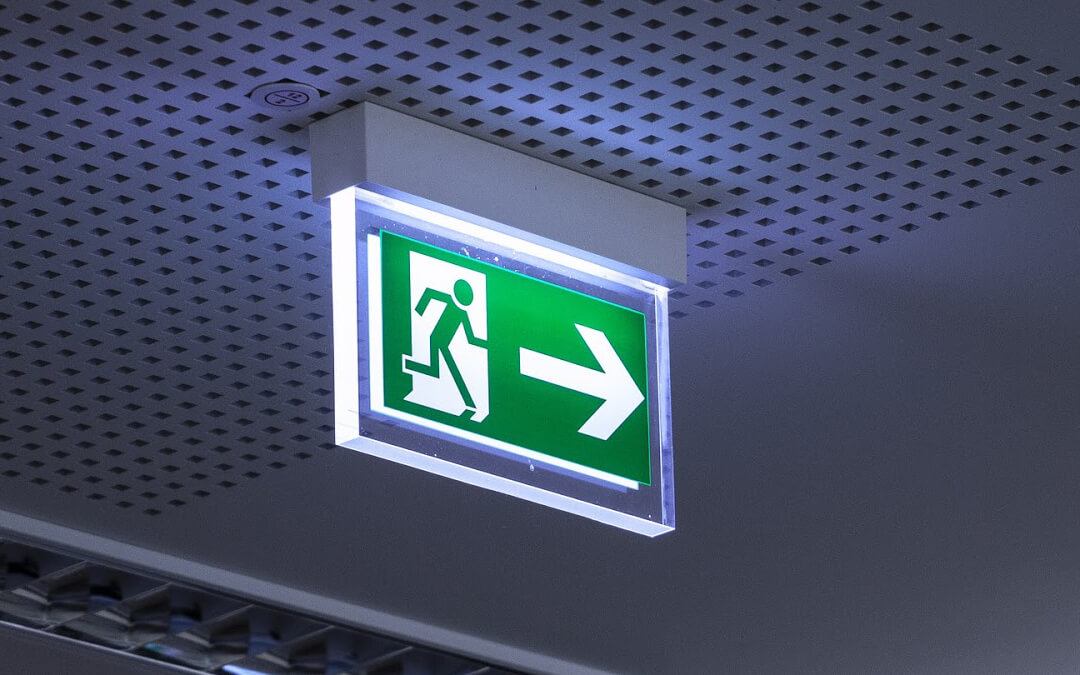
Fire Safety for Different Types of Properties
There are various fire safety regulations landlords must follow, which differ depending on the type of property owned by the landlord.
Single-occupancy homes
The Housing Act 2004, including the Housing Health & Safety Rating System (HHSRS), details the main requirements of fire safety in a rented home, including that tenants can escape easily in the case of a fire. It details the necessity of making repairs to “the fabric of the property” (such as ceilings) in a “timely manner” so fire can’t spread easily.
Multi-occupancy homes or HMOs (Houses in Multiple Occupation)
For HMOs, even if it’s unlicensed, you will need to follow additional, more specific fire safety rules and regulations. These include providing fire extinguishers and fire blankets. The precise requirements can vary from one local authority to another. It is best to check what they are with your local council housing department.
Apartments and flats in larger buildings
High-rise buildings such as purpose-built blocks of flats and apartments are designed with fire safety as a priority and are built to delay the spread of fire. Those responsible for the building, usually the owner, landlord, or managing agent, must comply with fire safety and housing legislation. There are several things you will need to do, such as assessing the risks in your building, putting in place fire safety measures, and making sure your residents know what to do if there is a fire.
The Government has published the Fire Safety (England) Regulations 2022, which came into force on 23 January 2023 following the publication of supporting guidance which is due later this year. The Regulations implement the majority of the recommendations made by the Grenfell Tower Inquiry in its Phase 1 report which required a change in the law and sought to improve the fire safety of blocks of flats in ways that are practical, cost-effective for individual leaseholders and proportionate to the risk of fire.
Fire Safety for Furnished Properties
All furniture and upholstery, provided as part of the rented property, by the owner, must meet the fire safety standard. These regulations that govern the types of furniture and furnishings that you are allowed to supply in a rented property are stated in The Furniture and Furnishings (Fire) (Safety) Regulations 1988. These are designed to ensure that upholstery components and composites used for furniture supplied in the UK meet specified ignition resistance levels.
Furniture and furnishings fire safety regulations
The laws governing fire and furniture safety were brought in to make sure that any furniture and furnishings supplied in a property that is rented out are fire resistant. This is so burning furniture will not produce fume-filled smoke if there is a fire in the property. Sometimes, furniture also has to pass a test for match and cigarette resistance.
All furniture or furnishings supplied with a furnished house have to be marked with a label showing that they meet all of the necessary standards. All new furniture subject to the law should come with a label already attached. However, safety labels can be lost, removed, or damaged over time. You must be able to demonstrate this with the safety label. If you rent out the property after the labels have been lost, you should either have the furniture re-tested or replace it.
Dealing with Vulnerable Tenants
A vulnerable tenant is any person whose ability to be safe at home is impaired. If your property houses vulnerable tenants, there are extra precautions you must take when considering the extra support the tenants may require in the event of a fire.
Extra precautions for elderly or disabled tenants
People with serious mobility difficulties should be encouraged to have their bedroom as close to a final exit door as practical, or to a relatively safe area. Tenants can install special devices, such as smoke alarms with a vibrating pad or flashing light for those with a hearing impairment, smoke alarms with a strobe light outside the house to catch the attention of neighbours or passers-by, and emergency calls or alarm systems for summoning help.
Creating a Fire Safety Plan
While fires themselves are dangerous enough, the threat is often compounded by panic and chaos if your tenants are unprepared. A fire safety management plan details arrangements for landlords to implement, control, monitor, and review fire safety standards and to ensure those standards are maintained.
Developing an effective fire safety plan
There are five key stages to consider when developing an effective fire safety plan for a rented property:
- 1. Identify Fire Hazards
- 2. Identifying People at Risk
- 3. Evaluate, Remove, Reduce, and Protect From Risk
- 4. Record, Plan, Inform, Instruct and Maintain
- 5. Review
As a minimum, your fire prevention plan must include a list of all major fire hazards, proper handling and storage procedures for hazardous materials, potential ignition sources and their control, and the type of fire protection equipment necessary to control each major hazard.
Communicating the plan to tenants
It can be hard to enforce some of these measures and tenants will only sometimes follow the rules. It’s important to put all your advice in writing. This is evidence to show you have done your utmost to reduce the likelihood of fire and protect your tenants.
Regular review and update of the plan
We recommend you review your Fire Safety Risk Plan at least every 12 months to ensure your compliance with the Regulatory Reform (Fire Safety) Order. The Fire Safety Risk Assessment must be reviewed regularly to keep it up to date.
Enforcement and Penalties
If your property does not comply with regulations, you could be putting your tenants at risk.
Consequences of non-compliance with fire safety regulations
New measures announced in March 2021 seek to bring in unlimited fines for landlords in breach of fire regulations. Local authorities can also take certain actions if they find fire hazards on your property during an inspection.
Potential penalties and legal action
Depending on the severity of the hazard, landlords could be served with an improvement notice, which requires you to fix the problem within 28 days. You could also receive a prohibition order prohibiting the use of all or part of the property. Emergency orders are given to have works carried out themselves at the landlord’s expense. A hazard awareness notice to provide a legal record of the problem may also be given. For serious safety concerns, a demolition or clearance order is given.
Conclusion
A fire in your property can leave it uninhabitable in a matter of minutes. This can result in costly repairs and loss of rental income. Most importantly, fire poses a significant risk to the safety of your tenants. This is why the landlord’s role in fire safety is of paramount importance and why fire safety regulations must be implemented and regularly assessed.
Please note:
Fire safety regulations are regularly updated and it is vital landlords are up-to-date with any changes to avoid fines and penalties.
Resources
There are many resources available for landlords to ensure they are up-to-date with amended legislations and Acts.
List of resources for further reading
Including the Housing Health & Safety Rating System (HHSRS). These are the main requirements of fire safety in a rented home, including that tenants can escape easily in the case of a fire.
(These are amendments and can be found through the original Act)
The regulations apply to any item that contains upholstery, so not only sofas, sofa beds, and mattresses but also curtains, pillows, and throws.
This act covers fire safety in shared communal areas. This is vital information for managing agents of blocks and landlords should speak to them about the specific requirements for each building.
Advice from the National Residential Landlords Association. Building regulations impact fire safety. This could apply to landlords building a property or refurbishing an existing one before you let it. You must make sure that any work carried out follows the legal requirements.
There must be warning systems in place within the property to alert tenants in case of fire. These rules tell you how to make sure you provide what is needed.
Contact information for fire safety consultation and services
Fire Safety Services – 020 3797 3053
NPG Fire Safety – 0800 043 1203 ([email protected])
Fast R Solutions – 0800 246 1802 – ([email protected])
Links to purchase fire safety equipment and materials
Fire Doors – Latham’s Steel Doors
Smoke Alarms – Safelincs
Fire Extinguishers – Fire Protection Shop
Fire Blankets – Nationwide Fire Extinguishers
Carbon Monoxide alarms – Tool Station

